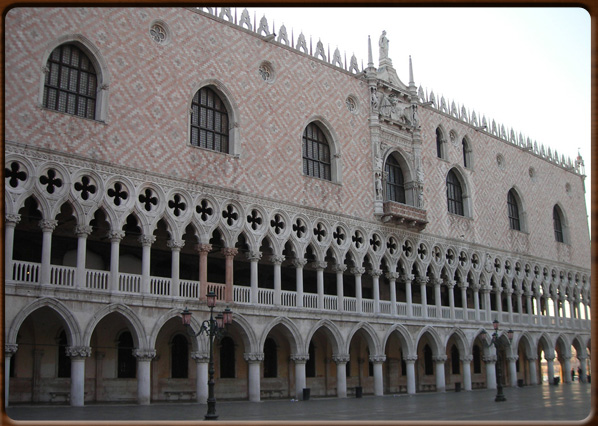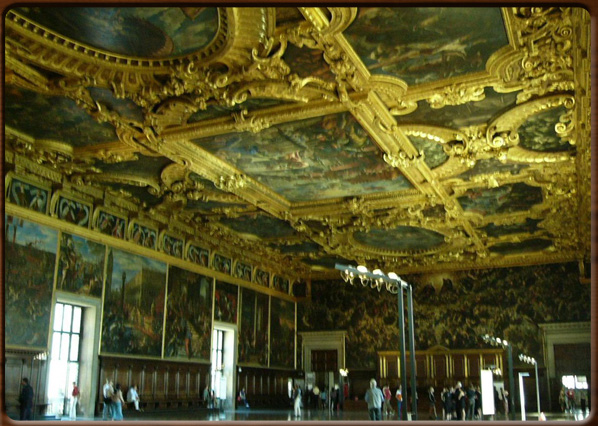
The Ducal Palace

Sala del Maggior Consiglio.


No video
Although there was no shortage of rich food, Venice had yet to develop its world-famous cuisine in the 1500s. However, so important were form and solemnity to the Doges, that they would themselves pay for five solemn banquets each year,
The most impressive aspect of these banquets in the hall of the Greater Council was the way the top table had been laid for members of Government, the apostolic nuncio and the French ambassador: Murano glass goblets and wrought silver cutlery sat on valuable Venetian lace scattered with sweets and candied fruit. Select groups of noblemen wearing bauta masks to hide their faces were allowed to attend the banquet until the second course.
Venetian governments often organized celebrations in honour of foreign visitors culminating in grand receptions and banquets. These were reported in great detail, thus letting us appreciate the lengths to which they went. For instance, in 1574 Henry III of France, the somewhat extravagant son of Caterina de’ Medici, decided to spend a week in Venice at very short notice and so, despite its tradition of sobriety, the Republic pulled out all the stops. Since it was July, short trips organised on the Bucentaur which had been decked out for a feast and a fabulous night race was held, watched by King of France from the balcony of Palazzo Foscari , while illuminated boats paid the tribute as they passed down the canal. The bizarre King Henry sang the "Te Deum" under a triumphal arch designed by Palladio and decorated by Tintoretto and Veronese on the island of "Lido".
The celebrations culminated on the Sunday with a banquet in the Doge’s Palace, in the hall of the Greater Council, where Henry III was welcomed by the two hundred most beautiful ladies of Venice all dressed in white and wearing their best jewels. The table was decorated with sugar sculptures designed by Sansovino: there were two lions, a queen on horseback between two tigers, a David and St. Mark, plus images of kings and popes, animals, plants and fruit.
Even the tablecloth, bread, plates and cutlery were made of sugar.
Despite the economic and political crisis, the 18th Century saw the height of parties and banquets in Venice. What we now call Venetian cuisine was born as a result of a vogue for French cuisine, adapted to take into account local tastes and products, the only innovative dishes in Italy in the 1700s.
1500 - - rev. 0.1.5